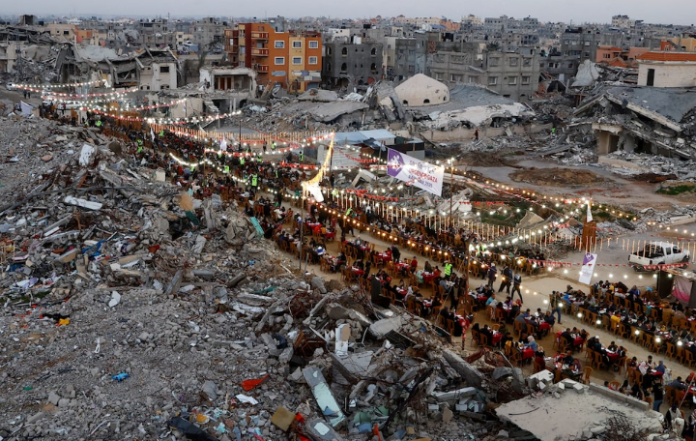As tensions in Gaza remain high, Egypt has introduced a strategic plan to reshape the region’s governance, aiming to sideline Hamas and replace it with an international coalition. This proposal, which challenges former U.S. President Donald Trump’s controversial “Gaza Riviera” plan, is set to be presented at an Arab League summit.
While Trump’s vision suggested clearing Gaza of its Palestinian population, Egypt’s approach focuses on restructuring leadership and stabilizing the war-torn enclave. The proposal, outlined in a draft seen by Reuters, suggests an interim governance body controlled by Arab, Muslim, and Western nations. However, critical questions remain unanswered, such as who will finance Gaza’s reconstruction and how Hamas will be phased out.
Key Elements of Egypt’s Proposal
The plan introduces a Governance Assistance Mission, which would temporarily take over administration in Gaza, managing humanitarian aid and reconstruction efforts. However, the draft does not specify a timeline for this transitional government or whether it would operate before or after a formal peace agreement is reached.
Security in Gaza would be handled by an International Stabilization Force composed primarily of Arab states. This force would replace Hamas’s armed presence, with plans to establish a new local police unit over time. The oversight of both governance and security efforts would be led by a steering board, which would include representatives from key Arab countries, the Organization of Islamic Cooperation, the United States, Britain, and the European Union.
Arab Nations Push Back Against Trump’s Vision
The Egyptian proposal emerges as part of a broader Arab response to Trump’s plan, which suggested mass displacement of Palestinians. Countries like Egypt and Jordan have strongly opposed this idea, seeing it as a direct threat to regional security. Instead, Egypt’s approach seeks to ensure that Palestinians remain in Gaza under a governance structure that excludes Hamas.
Despite this diplomatic push, Hamas remains resistant to external influence. Senior Hamas official Sami Abu Zuhri has dismissed any foreign intervention, stating that “the day after in Gaza must only be decided by the Palestinians.” The draft does not mention elections or a clear process for transitioning power in the long run.
Who Will Fund Gaza’s Reconstruction?
One of the biggest challenges to rebuilding Gaza is securing funding. According to the United Nations, the cost of reconstruction exceeds $53 billion, with an estimated $20 billion needed for the initial phase alone. While Gulf nations like Saudi Arabia, Qatar, and the UAE could provide financial backing, their commitment depends on Hamas’s removal from power.

Egypt’s plan suggests that the steering board could establish a reconstruction fund and coordinate international donor conferences. However, there are no concrete financial commitments in the proposal, leaving uncertainty about how Gaza will recover from the devastation caused by the war.
What’s Next for Gaza?
While Egypt’s plan provides a framework for Gaza’s future, its success depends on international support and Hamas’s willingness—or lack thereof—to step aside. With Arab states scrambling to counter Trump’s vision, the coming weeks will determine whether Egypt’s diplomatic efforts gain traction or face resistance from both regional and global powers.
As discussions continue, one thing remains clear: the future of Gaza hangs in the balance, and how it unfolds will shape the region’s political landscape for years to come.



